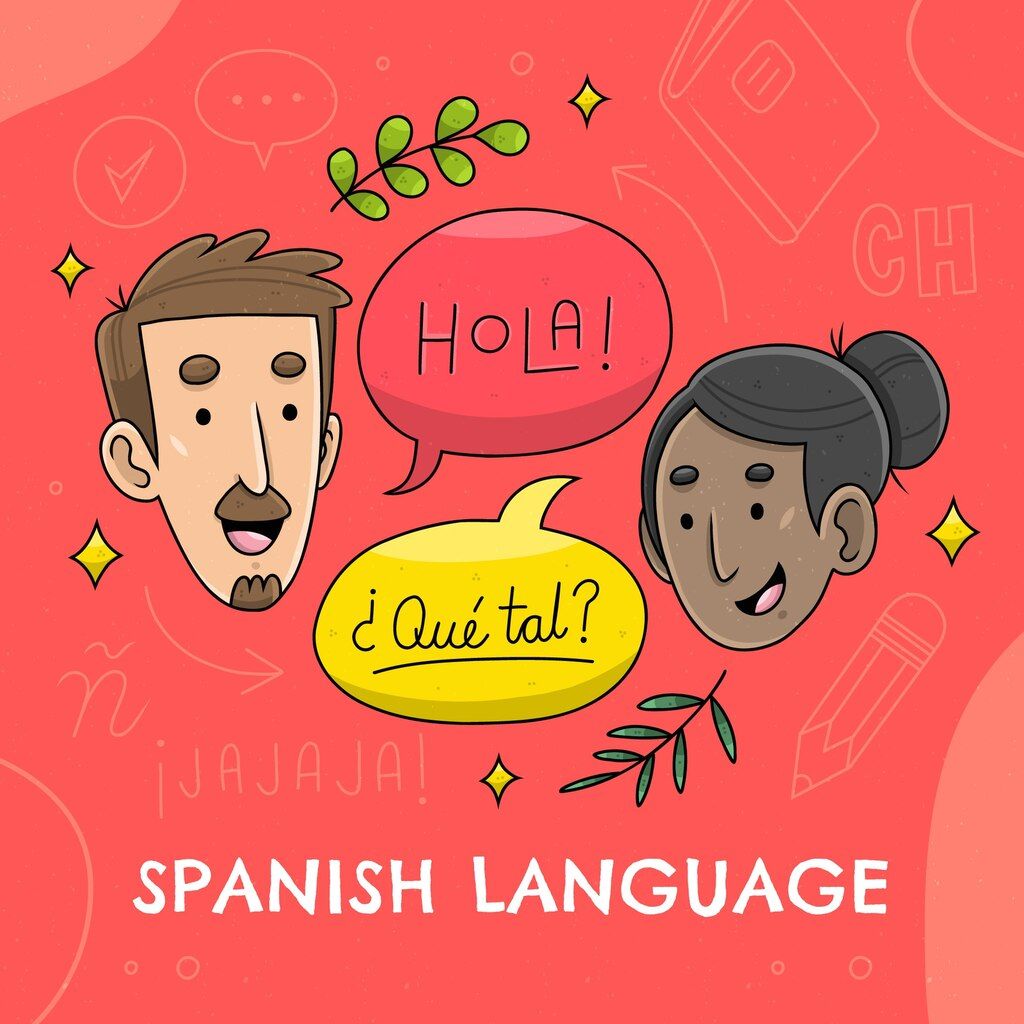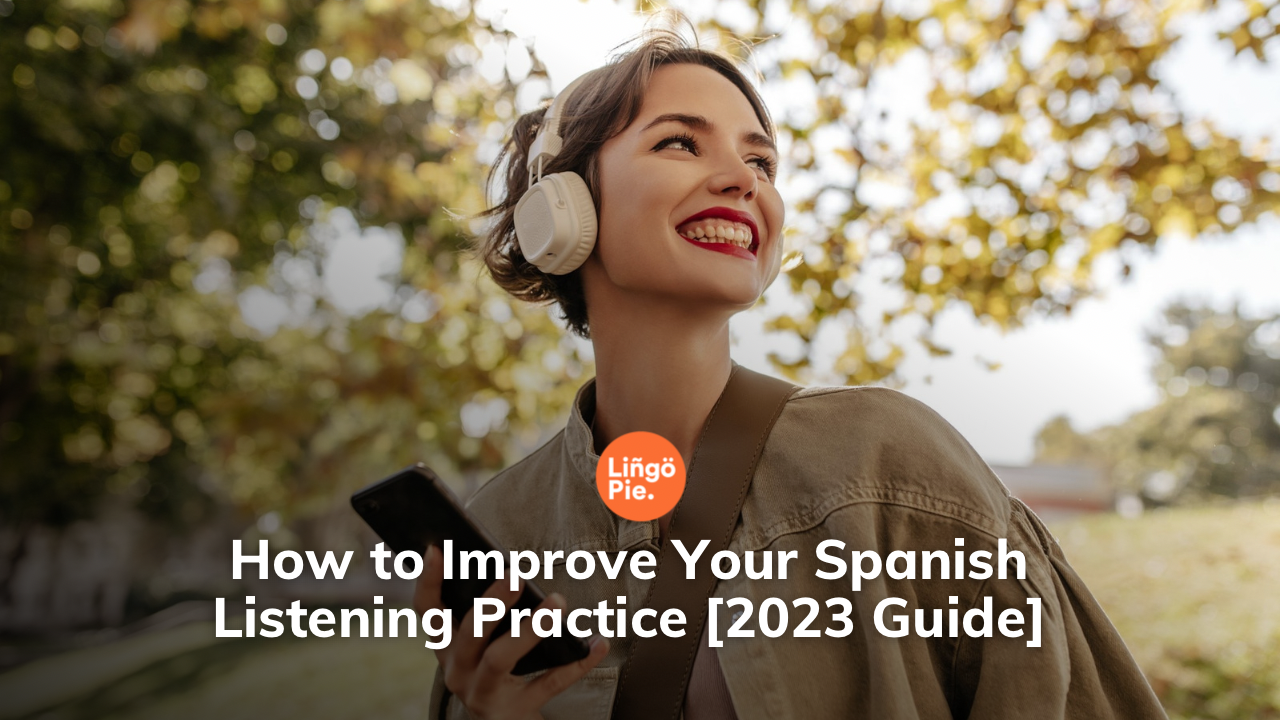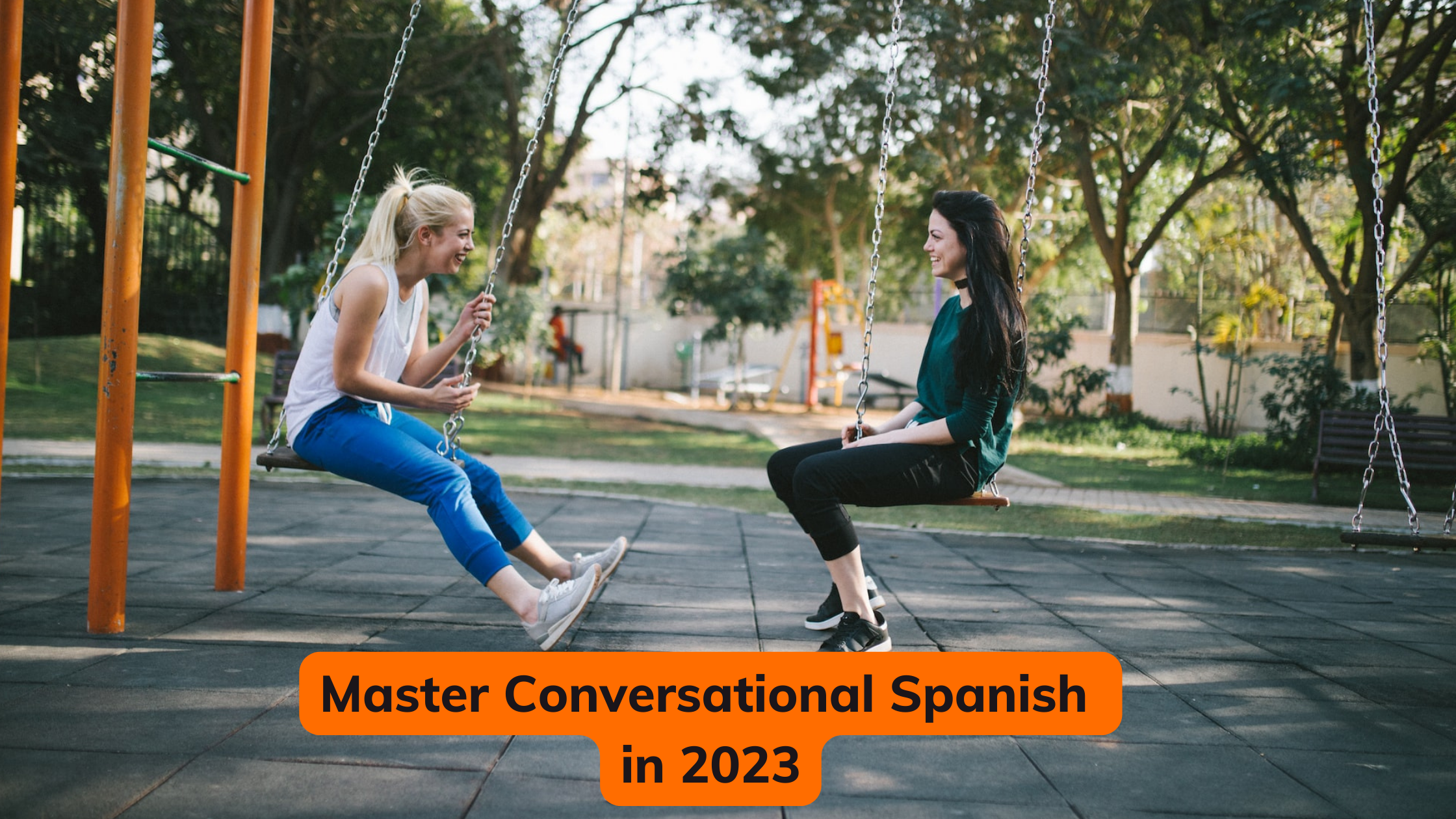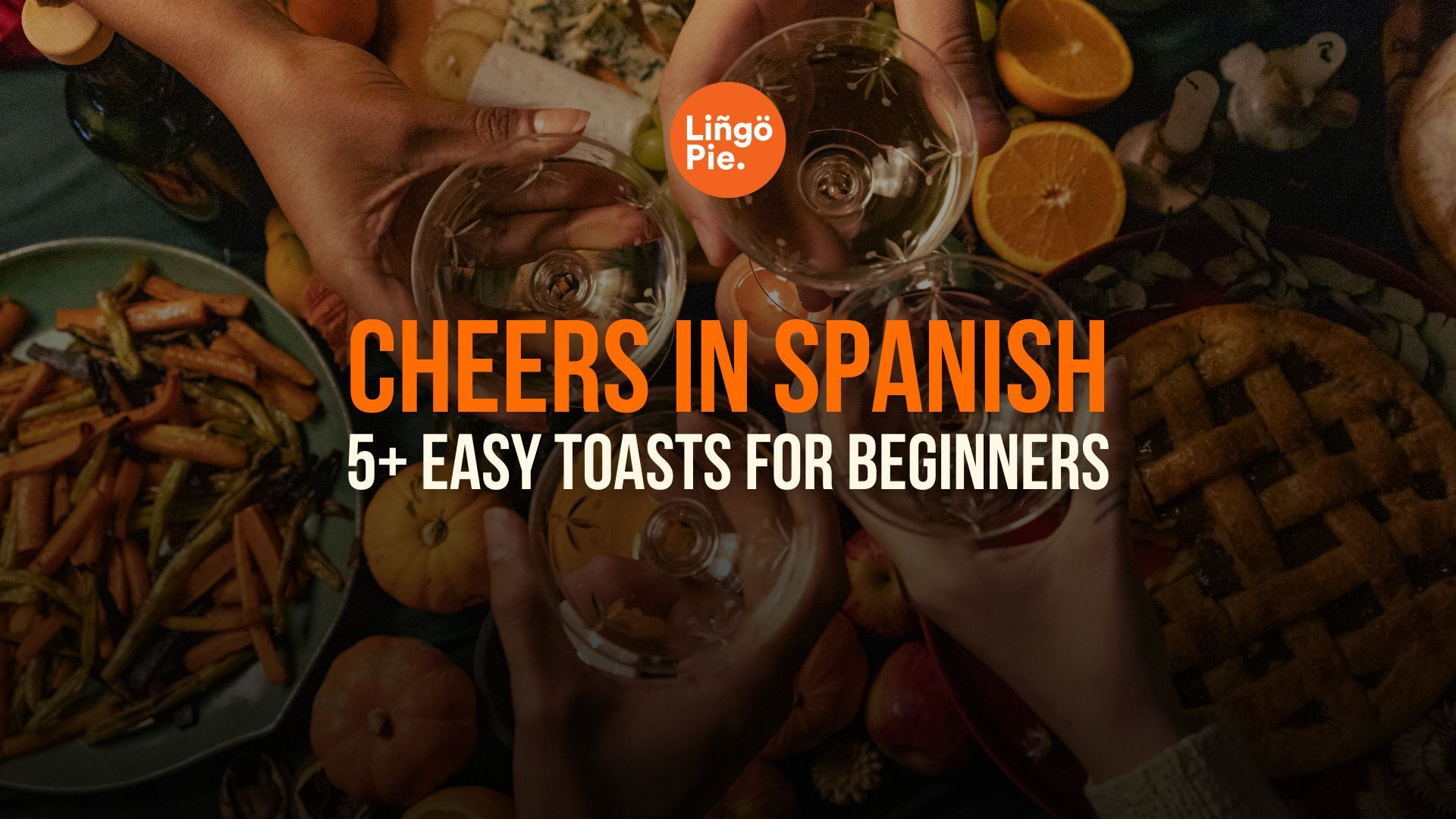Let's face it – becoming fluent in Spanish takes about 24 weeks (or 600 hours) of dedicated learning, according to the Foreign Service Institute. That might sound like a lot, but here's the thing: you don't need to quit your job or move to Madrid to make it happen.
The secret? It's not about studying harder – it's about studying smarter. Forget those dusty textbooks and boring grammar drills. Today's Spanish learners are reaching fluency faster than ever by combining traditional methods with modern tools and techniques.
In this guide, we'll break down 5 game-changing strategies that'll help you hack your way to Spanish fluency, no matter your schedule or learning style.

Why Learn Spanish In 2025
With 500 million native speakers worldwide, Spanish isn't just another language to add to your resume. It's the second most spoken native language globally (right behind Mandarin Chinese), and it's growing faster than you might think.
Think the Spanish language is somehow becoming less relevant in our digital age? Think again. The U.S. is actually on track to become the largest Spanish-speaking country by 2060, with projections showing a jump from 60 million to 111 million Spanish speakers. That's right – more Spanish speakers than Spain, Mexico, or any other Spanish-speaking country.
The Numbers That Matter
| Metric | Current (2024) | Future Projection |
|---|---|---|
| Global Native Speakers | 500 million | Top 5 language by 2050 |
| U.S. Spanish Speakers | 54 million | 111 million by 2060 |
| Global Ranking | #2 most spoken native language | Will maintain position |
Why This Matters For You
| Career Impact | Cultural Impact | Personal Growth |
|---|---|---|
| Increased job opportunities | Access to rich cultural content | Connect with 500M+ speakers |
| Higher earning potential | Understanding diverse perspectives | Travel with confidence |
| Competitive advantage in business | Entertainment in original language | Enhanced cognitive abilities |
In short? Learning Spanish in 2025 isn't just about learning a language – it's about plugging into a global network that's only getting bigger and more influential. Whether you're in it for the career opportunities, the cultural connections, or just the joy of learning, the timing has never been better.
How To Become Fluent in Spanish
Let's be real – "fluent" means different things to different people. Before diving into learning Spanish, ask yourself: What type of fluency do you actually need?
| Type | What It Means | Best For |
|---|---|---|
| Conversational Fluency | Can chat comfortably about daily life | • Travelers<br>• Social situations<br>• Basic work interactions |
| Business Fluency | Can handle professional situations & negotiations | • International business<br>• Professional relationships<br>• Corporate environments |
| Academic Fluency | Can understand complex texts & write formally | • Students<br>• Researchers<br>• Academic professionals |
| Cultural Fluency | Can understand slang, jokes & cultural references | • Living abroad<br>• Entertainment<br>• Deep cultural connections |
Don't aim for "perfect Spanish" – aim for the type of Spanish that serves your goals. A tourist doesn't need business vocabulary, just like a business professional might not need to understand local slang.
Pro Tip: Start by identifying your fluency goal, then focus your learning on the specific vocabulary, grammar, and cultural aspects that support it. This targeted approach is way more effective than trying to learn "everything."
How to Learn Spanish Based on Your Fluency Goals
Every type of Spanish fluency requires a different learning approach. Here's your roadmap based on what you want to achieve:
For Conversational Fluency
Focus on practical, everyday Spanish that gets you talking quickly.
| Activity | Why It Works | How Often |
|---|---|---|
| Watch Spanish sitcoms | Learn natural dialogue patterns | 30 mins daily |
| Language exchange apps | Practice real conversations | 2-3 times weekly |
| Learn high-frequency phrases | Master the most common expressions | Daily practice |
| Listen to Spanish podcasts | Train your ear for natural speech | During commute/chores |
For Business Fluency
Emphasize professional vocabulary and formal communication.
| Activity | Why It Works | How Often |
|---|---|---|
| Read business news in Spanish | Learn industry vocabulary | 20 mins daily |
| Practice email writing | Master formal communication | Weekly |
| Take business Spanish courses | Learn specific terminology | Structured lessons |
| Watch business presentations | Understand formal speaking | 2-3 times weekly |
For Academic Fluency
Focus on complex grammar and sophisticated vocabulary.
| Activity | Why It Works | How Often |
|---|---|---|
| Read academic papers | Build advanced vocabulary | Daily |
| Practice academic writing | Master formal structures | Weekly essays |
| Study grammar intensively | Perfect complex structures | Structured study |
| Join academic discussions | Apply formal speaking skills | Weekly |
For Cultural Fluency
Immerse yourself in Spanish-speaking culture and entertainment.
| Activity | Why It Works | How Often |
|---|---|---|
| Watch regional movies/shows | Learn local expressions | Daily viewing |
| Listen to local music | Pick up current slang | Regular listening |
| Follow social media influencers | Stay current with trends | Daily check |
| Read local news/blogs | Understand cultural context | Daily reading |
Pro Tip: Mix and match these approaches based on your needs. Even if you're aiming for business fluency, some conversational practice will help round out your skills. The key is spending 80% of your time on your primary goal and 20% on supporting skills.
Remember: Consistency beats intensity. Small daily practice sessions will get you further than occasional cram sessions!
5 Essential Tips To Learn Spanish Fluently
Immerse Yourself Around Those That Speak Spanish Fluently

Immersing yourself in the Spanish language and culture is undeniably one of the most effective ways to attain fluency. In order to truly master Spanish, it's crucial to create an environment where Spanish becomes your native language.
Surround yourself with native Spanish speakers, engage in daily conversations, and make an effort to think in Spanish. This total immersion technique not only accelerates language learning but also enhances your understanding of cultural nuances, idiomatic expressions, and colloquialisms.
As you interact with native speakers, you'll not only learn Spanish but also absorb the cultural aspects that are intertwined with the language. This immersive experience fosters a deeper connection to the language, making it a part of your daily life.
The more you immerse yourself, the closer you'll come to speaking Spanish fluently, breaking down the barriers that separate you from becoming a proficient Spanish speaker.
Utilize every resource available to you. This means watching Spanish movies, listening to Spanish music, and watching YouTube videos.
Practice Speaking Regularly
In order to truly learn Spanish and engage with native speakers, regular speaking practice is paramount.
It's not enough to simply study grammar and practice spanish vocabulary; putting your skills into action through conversation is key.
Consistent interaction with native Spanish speakers not only helps you refine your pronunciation but also enhances your understanding of the language's rhythm and flow. And guess what? Access to Spanish-speakers is possible, even if you are unable to travel. Utilize social media platforms and online language exchange programs.
By engaging in daily conversations, you'll develop the ability to express yourself fluently and naturally.
This practice is central to language learning, as it allows you to apply what you've learned in real-life contexts. Whether you're conversing with native speakers or fellow learners, regular speaking practice builds confidence and refines your communication skills.
So, make speaking a fundamental part of your language learning journey, and you'll soon find yourself conversing confidently with native speakers, bridging the gap between student and fluent speaker.
Read also:



Spanish Language - Formal Classes

Formal Spanish classes and courses remain a highly effective way to embark on your journey towards Spanish fluency. While self-study methods have their place and they might be better to learn spoken Spanish, structured classes offer a solid foundation and a clear learning path.
The duration it takes to learn Spanish varies from person to person, depending on factors such as prior language learning experience and the intensity of study. In general, achieving basic conversational skills can take as little as three to six months of consistent effort. Reaching a more advanced level of fluency, where you can comfortably engage with native speakers, may require a year or more of dedicated study.
Why are we telling you this? Well, formal classes provide the benefit of guidance from experienced instructors who can tailor lessons to your needs, correct mistakes, and offer valuable feedback. This speeds up the process of reaching fluency in Spanish.
Whether you opt for in-person classes or online courses, the structured approach they provide ensures you cover essential grammar rules, vocabulary, and pronunciation.
So, investing your time in formal Spanish classes can significantly expedite your path to fluency, setting you on the road to confident communication with native speakers.
Build Your Vocabulary
Expanding your Spanish vocabulary is a crucial aspect of language learning, allowing you to express yourself more effectively and understand native speakers better.
Building vocabulary takes time and consistent effort. One effective way to do this is by using language learning platforms like Lingopie, which provides a wealth of content in both spoken and written Spanish.
To build your vocabulary effectively, try the following tips:
- Daily Word Practice: Dedicate time each day to learn new Spanish words. With Lingopie, you can use flashcards, a dual-subtitle feature alongside Spanish music videos, and other online resources.

- Contextual Learning: Learn words in context. Read books, watch Spanish-language films, and listen to podcasts or music. This helps you understand how words are used naturally in conversations.
- Practice Speaking: Apply new vocabulary in conversations with native speakers or fellow learners. Speaking helps solidify your understanding of words and phrases.
- Remain Consistent: Make vocabulary-building a regular habit. Small, consistent efforts will yield better results than occasional cramming sessions.
By consistently building your Spanish vocabulary, you'll become better equipped to engage with spoken and written Spanish, ultimately enhancing your ability to communicate with native speakers and fellow learners alike.
Visit a Spanish-speaking Country

Visiting a Spanish-speaking country is an unparalleled opportunity for Spanish learners not only to immerse themselves in the language but also experience the rich tapestry of diverse cultures.
There are over 20 countries where Spanish is the official language, each offering a unique travel experience.
Countries like Spain, Mexico, Argentina, and Colombia are renowned for their rich history, vibrant traditions, and stunning landscapes, making them excellent countries to visit for language enthusiasts and travelers alike.
When you step into these countries, you're instantly surrounded by native Spanish speakers, providing you with real-life exposure to the language.
Traveling makes learning a language easier because it forces you to use it in everyday situations. You'll pick up conversational skills rapidly as you order food, ask for directions, and interact with locals.
It's a dynamic Spanish course that goes beyond textbooks and classroom settings, allowing you to develop language skills, grasp Spanish grammar, and understand the nuances of local dialects.
Moreover, the experience of communicating with native Spanish speakers fosters a deeper cultural understanding, making your journey towards speaking Spanish fluently all the more enriching.
So, pack your bags and embark on an adventure that will not only enhance your language skills but also broaden your horizons.
FAQs: How to Become Fluent in Spanish
Welcome to our FAQs section. Here, we address common queries and provide insightful answers to help you navigate the exciting journey toward Spanish fluency with confidence and success.
How long does it take to be fluent in Spanish?
The time it takes to become fluent in Spanish varies, but achieving basic conversational skills can take around six months of consistent effort. To attain a high level of fluency where you can speak confidently may take a year or more of dedicated study and practice.
What is the fastest way to learn Spanish fluently?
The fastest way to learn Spanish fluently is through total immersion, where you surround yourself with the language in a Spanish-speaking country. Intensive language courses, frequent interaction with native speakers, and daily practice are also effective approaches.
How can I become fluent in Spanish in a year?
Becoming fluent in Spanish in a year is possible with focused effort. Enroll in formal classes, practice speaking regularly, immerse yourself in the language, and expand your vocabulary. Consistency is key, and setting specific goals can help you stay on track.
How hard is it to become fluent in Spanish?
The difficulty of becoming fluent in Spanish varies from person to person. While it can be challenging, with dedication and consistent practice, it's attainable. Learning any language requires effort, but the rewards of speaking Spanish fluently, connecting with others, and experiencing rich cultures make it a worthwhile endeavor.
Summing Up: How to Become Fluent in Spanish
In conclusion, the path to fluency in Spanish is an exciting and rewarding journey filled with challenges and discoveries. Becoming fluent in this widely spoken language opens doors to diverse cultures, fosters connections with native speakers, and enriches your life in countless ways.
In order to achieve fluency, you need to explore various strategies, from immersive experiences to formal classes and vocabulary building through TV shows, movies, music, and more.
Remember that the time it takes to become fluent can vary from person to person, but consistent effort is the key.
Take advantage of structured Spanish courses, expand your vocabulary, and immerse yourself in Spanish-speaking countries whenever possible.
With dedication, patience, and a passion for learning, you can achieve fluency in Spanish. Whether it's for travel, career opportunities, or personal enrichment, your journey to becoming a fluent Spanish speaker is an investment that will continue to pay dividends throughout your life.
So, what are you waiting for? Embrace the beauty of the Spanish language and culture. Sign up for a 7 day free trial on Lingopie today and start your journey to Spanish fluency.


![How To Become Fluent in Spanish: 5 Best Tips [2025]](/blog/content/images/size/w1200/2023/10/444DE53E-3543-4F83-8DA7-E5BE31BAD1AA.png)




![30+ Modern English Slang Terms For Money [Guide]](/blog/content/images/size/w300/2025/06/Slang-term-for-money.jpg)
![5 Official Spanish Language Tests To Show Your Proficiency Level [Guide]](/blog/content/images/size/w300/2025/06/Spanish-Language-Tests.jpg)

![Why Memorizing Spanish Words Won’t Make You Fluent [Tips]](/blog/content/images/size/w300/2025/06/how-to-practice-spanish-vocabulary.jpg)